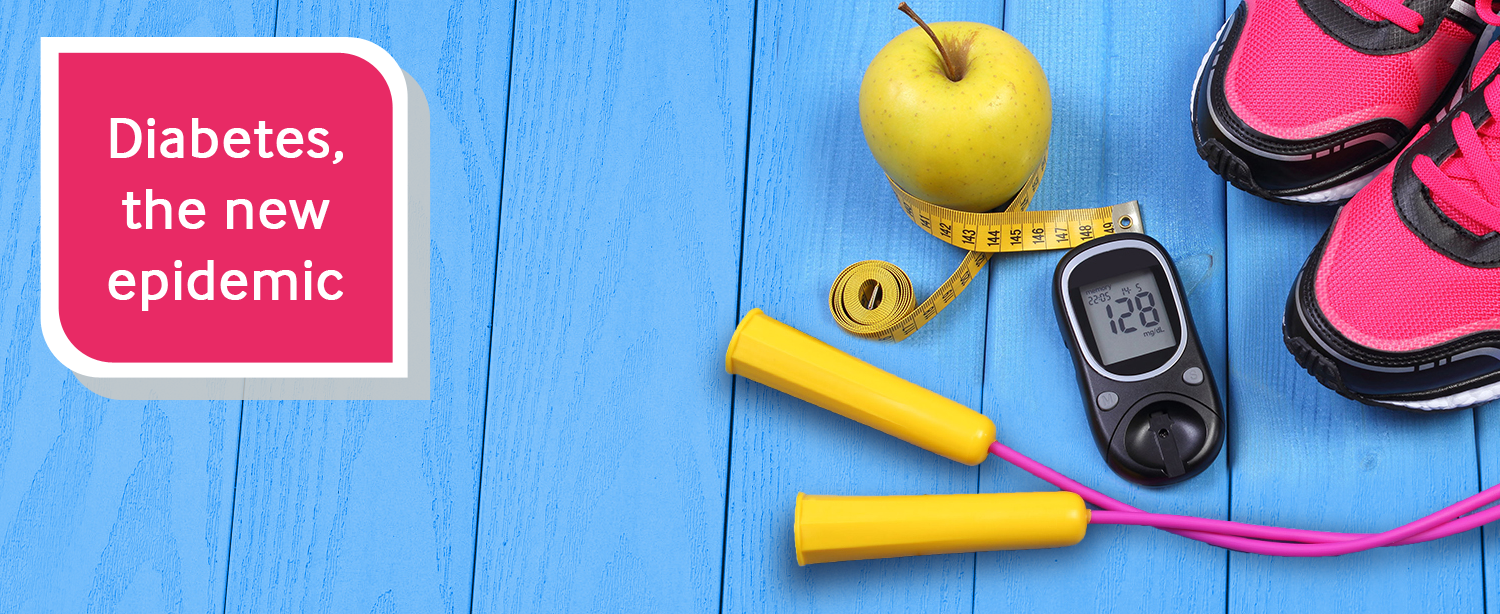What is Diabetes?
Diabetes or diabetes mellitus is a condition where the body is unable to break down sugar (glucose) in the blood. It occurs when the body does not produce enough insulin or when we cannot use the insulin made by the pancreas properly. This leads to an increase in blood glucose levels and causes diabetes.
There are Three Different Types of Diabetes:
Type 1 Diabetes:
This type occurs when the pancreas is unable to produce insulin, typically due to death of the beta cells in the pancreas from an autoimmune reaction. Type 1 Diabetes is usually diagnosed in children and adolescents. This can cause people to have too much glucose in the blood or hyperglycaemia. This affects 10% of the people.
Type 2 Diabetes:
This type occurs when the pancreas does not produce enough insulin or when the body does not effectively use the insulin produced. It develops in adulthood, although levels are increasing in children due to obesity, which is a risk factor for diabetes. Approximately 90% of people with diabetes have Type 2 diabetes.
Gestational Diabetes:
Gestational Diabetes is a temporary condition that occurs during pregnancy. This type may increase future risk of developing diabetes for both the mother and child.
Some common diabetes symptoms:
Frequent urination, frequent thirst, unexplained weight loss, fatigue, blurred vision, weakness, increased hunger, headaches, skin infections, slow healing, and numbness in feet.
Some Diabetes Risk factors:
| WHAT YOU CAN’T CHANGE | WHAT YOU CAN CHANGE |
|
|
Prediabetes
Pre-diabetes is a condition in which blood glucose levels are higher than normal, but not high enough to be classified as full-blown diabetes. If you have pre-diabetes, you are at high risk of developing type 2 diabetes and also are at increased risk of developing heart disease. Those with pre-diabetes are at increased risk of developing type 2 diabetes within a decade unless they adopt a healthier lifestyle that includes weight loss and more physical activity.
Some Diabetes facts:
- About one third of all people with diabetes do not know they have the disease.
- A meal plan for a person with diabetes isn’t very different than that which is recommended for people without diabetes.
- Diabetes is the leading cause of blindness in working-age adults.
- People with diabetes are twice as likely to develop heart disease than someone without diabetes.
- Good control of diabetes significantly reduces the risk of developing complications and prevents complications from getting worse.
- There is an emerging global epidemic of diabetes that can be traced back to rapid increases in overweight, obesity and physical inactivity.
- Total deaths from diabetes are projected to rise by more than 50% in the next 10 years. Most notably, they are projected to increase by over 80% in upper-middle income countries.
- Type 1 diabetes is characterized by a lack of insulin production and type 2 diabetes results from the body’s ineffective use of insulin.
- Lack of awareness about diabetes, combined with insufficient access to health services, can lead to complications such as blindness, amputation and kidney failure.
- Reports of type 2 diabetes in children – previously rare – have increased globally.
Some tips for living healthy with diabetes:
- When you have type 1 or type 2 diabetes, you need to be very aware of not only what you eat, but also when and how much you eat. Following a healthy meal plan is essential.
- Controlling intake of saturated and trans fat is also important. Obesity is a major risk factor for diabetes, so controlling and maintaining a healthy weight is vital for diabetes control.
- Keep your blood sugar meter handy and accessible. It is important to keep it with you at all times to measure blood sugar levels periodically.
- It’s essential to keep fast acting carbs close and nearby like honey, parle G biscuit or a candy. It will be helpful when your sugar levels go low.
- Physical activity is an important part of controlling diabetes and preventing complications such as heart disease and high blood pressure. Try for 30 minutes of moderate exercise, like brisk walking, on most days.
- Your doctor may give you oral medication to help control your blood glucose levels. For people with type 1 diabetes (and some people with type 2 diabetes) this means taking insulin.
Diabetes is a challenging disease. No matter if you have the same exact blood sugar, eat the same exact number of carbs and participate in the same amount of activity, you will still have a different blood sugar number when it’s all said and done. Try your best to lead a healthy lifestyle. Do consult our health experts for all your diabetes queries, please find link below:


